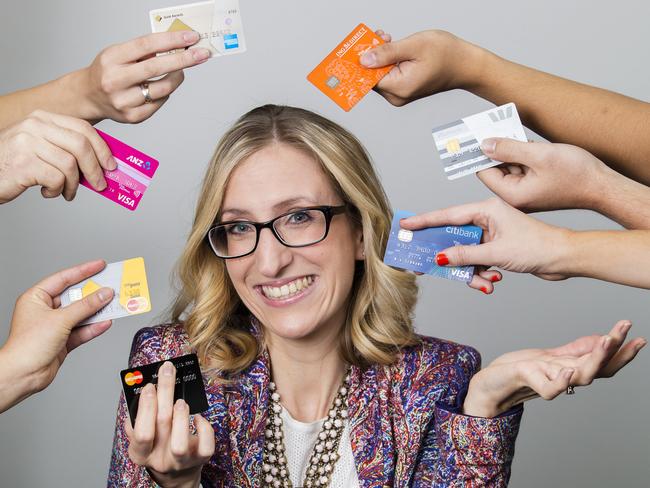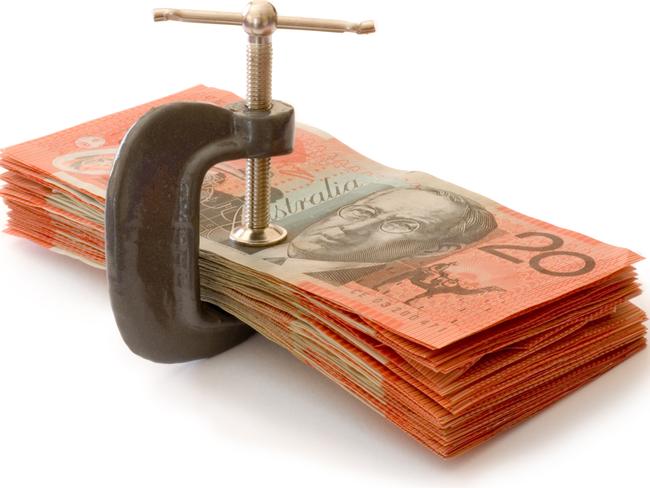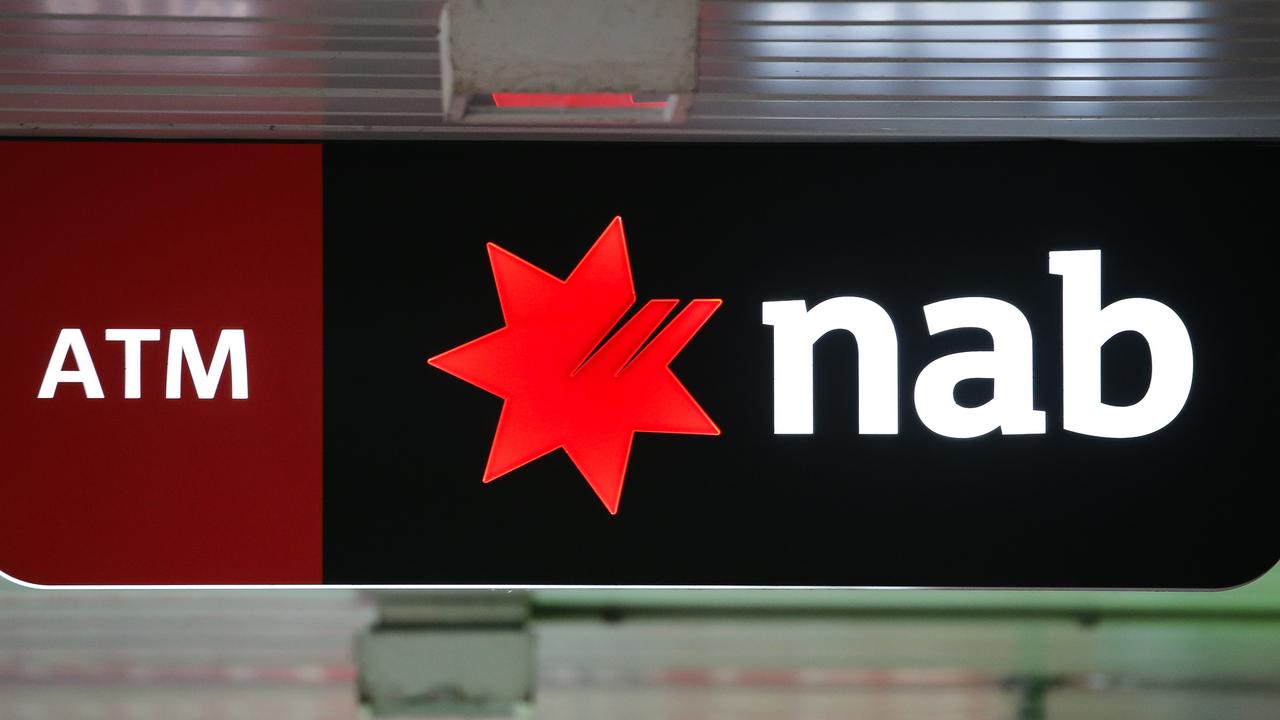10 sneaky tricks banks pull that cost you
THESE are the tricks the banks don’t want you to know. Financial institutions have a multitude of sneaky ways to charge you more, but here’s how to not get ripped off.
BANKS are tricky buggers. There are many ways that big financial institutions can pull a swiftie on their customers and lock them into paying more for credit cards, home loans and other products.
Whether it’s tempting introductory offers, flashy rewards schemes or too-good-to-be-true interest rates, there are many traps for unsuspecting customers.
It’s a subject that money expert Michelle Hutchison, from financial comparison website finder.com.au, is passionate about and she has shared some of the main things customers should look out for when dealing with the banks.
Here are the top 10 ways that banks make you pay more.

1. Interest-free terms
Many people try to pay their credit card balances off during their interest-free periods, but you need to be across the details of your billing cycle to ensure you don’t get stung. “For instance, if you’re billing cycle starts on June 1 and ends June 30, and your interest free period is 55 days, that means your interest free period ends on July 25. If you made a purchase on day 15 of your billing cycle, the interest-free period for that purchase would be 40 days,” Ms Hutchison said. “The tricky part is that if you don’t pay off the full balance by the due date, you will lose your interest-free period for the following billing cycle and will be charged interest daily”. Some cards will also sting you if you don’t pay off the balance in full. They will charge you interest daily on everything you purchased and backdate the interest charged from the date you made each purchase.
2. Balance-transfer fee
If you have heavy debt or a number of credit cards, consolidating what you owe onto one card might seem like an attractive proposition. But there are traps. Some cards charge a balance-transfer fee of 3 per cent of the balance, which would cost $300 on a $10,000 debt. Customers should check whether there is a balance-transfer fee and whether there is an annual fee, and whether these costs would outweigh the savings.

3. Revert rates
Many credit cards entice new customers with an introductory deal where you can shop to your heart’s content for the first year without any interest. However, customers might not be aware that they need to pay the minimum repayments with each month’s bill or the deal could be terminated.
4. Bonus points
Cards may also lure you in with the promise of bonus points, but they are usually subject to a minimum spend of as much as $500 in the first three months. This cost, coupled with an annual fee of up to $1200, can quickly outweigh the value of the points. “It can be argued that bonus points on sign-up can be a little misleading when there are strings attached,” Ms Hutchison said.

5. Cash advances
Most credit card holders know that when they withdraw cash from their credit card they will cop a high interest rate from the minute they do so. But you might not be aware of the fee that comes on top. “This can be a real sting,” Ms Hutchison said. “Not only can you expect to be charged an interest rate of up to 29.49 per cent from the moment you withdraw cash … but you can also be slugged up to 4 per cent for a cash advance fee.” For a $1000 withdrawal, that’s $40, plus interest on top. “Some cards have a cap to the maximum cash advance fee charged but not many, so it’s worth comparing cards and their fees involved,” Ms Hutchison said.
6. Introductory periods
This can be a catch for first homebuyers. Home loans can offer cheaper rates at the start for a year or two and then revert to a much higher rate thereafter. “This can mean the cost of the home loan becomes much more expensive than if you compared home loans for the cheapest ongoing rate from the start,” Ms Hutchison said.

7. Advertised rates
Don’t be surprised if the interest rate advertised by lenders bears no resemblance to the actual cost of a loan. “The advertised rates on home loans are often irrelevant because lenders may offer you a different interest rate depending on how much you want to borrow and your credit history based on their lending criteria,” Ms Hutchison said. These rates also don’t include ongoing fees.
8. Comparison rates
The banks are being tricky here again because although comparison rates are meant to give the borrower a more realistic idea about the cost of a home loan, they are usually based on out-of-date prices. Advertised comparison rates are usually based on a loan of $150,000 over 25 years. This is a standard benchmark that was set about 20 years ago and no longer reflects the average home loan size, which is $300,000, according to the Australian Bureau of Statistics. Ms Hutchison recommends customers ask what rate they will be charged for their particular loan size before signing up.

9. Offset accounts
Offset accounts are transaction accounts linked to home loans to offset the outstanding balance. They can be a smart way to pay less interest and pay off your home loan faster, but make sure you read the fine print. “Generally, if it’s not 100 per cent offset, it probably won’t be worth it so make sure you do your calculations,” Ms Hutchison said. Also, some offset accounts charge a monthly fee of up to $15, which can outweigh the savings your making if you don’t have enough saved in your account.
10. Bonus interest
Online savings accounts can offer from of the highest levels of interest available — but tight conditions mean customers really have to earn it. Account holders are usually required to deposit at least $200 a month and the bonus interest rate will usually be cut if you make a withdrawal. If you don’t deposit or do make a withdrawal, you’re likely to earn next to no interest.

Ms Hutchison said it was ultimately up to customers to be financially responsible with their money.
“We can’t rely on banks to tell us which financial products will benefit us the most, nor can we take financial products at face value,” she said.
“Consumers need to fully understand how the products work and read the fine print before signing up.
“However, there are loads of opportunities where consumers can not only avoid being ripped off by banks, but make financial products work in their favour and save money in the process.”
Finder.com.au is one of Australia’s biggest comparison websites.




